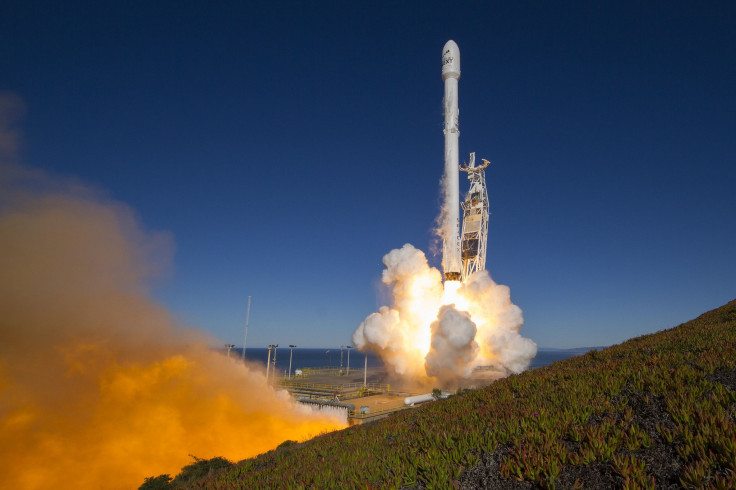SpaceX’s Upcoming Rocket Launch Will Be Made Using An Expendable Falcon 9 Booster, Elon Musk Says

SpaceX’s upcoming Falcon 9 launch, when it will deliver a 5.5 metric ton communications satellite for EchoStar Corporation to a geostationary transfer orbit, will be made using a reusable rocket, CEO Elon Musk confirmed in response to a question on Twitter on Saturday. The launch is scheduled to take place from the Kennedy Space Center in Florida no earlier than Jan. 30.
That launch is expected to be one of the last times — if not the last time — SpaceX would use an expendable Falcon 9 booster.
“Future flights will go on Falcon Heavy or the upgraded Falcon 9,” Musk said on Twitter, adding that the upgraded Falcon 9 rocket — the Block 5 — “significantly improves performance & ease of reusability” and is likely to have its first flight by the end of 2017.
The existence of the Block 5 version of Falcon 9 was first revealed by Musk in late 2015 during a Reddit AMA. At the time, Musk said since the booster was designed for easy reuse, “it just makes sense to focus on that long term and retire the earlier versions.”
“Final Falcon 9 has a lot of minor refinements that collectively are important, but uprated thrust and improved legs are the most significant,” Musk said during the AMA. “The big booster will have an easier time of things than Falcon, as the mass ratio of the stages is lower and it will have lower density. Net result is that it won't come in quite as hot and fast as Falcon, so Falcon should be a bounding case on the big booster.”
The Falcon Heavy rocket, meanwhile, has been touted by SpaceX as the world’s most powerful operational rocket. According to the company, the rocket — whose first stage consists of three Falcon 9 engine cores — has the ability to lift a payload of over 54 metric tons into orbit.
SpaceX returned to flight after a four-and-a-half month gap on Jan. 14. The launch, which delivered 10 satellites to low-Earth orbit for the communications company Iridium, was the first since Sept.1, when an explosion destroyed one of SpaceX's Falcon 9 rockets and a $200 million AMOS-6 communications satellite it was carrying.
Saturday’s successful launch puts SpaceX back on track toward fulfilling its space ambitions. The company currently has a backlog of over 70 missions, estimated to be worth over $10 billion. According to internal documents recently accessed by the Wall Street Journal, SpaceX hopes to fly as many as 27 times this year — much more than it has ever done in a single year.
© Copyright IBTimes 2025. All rights reserved.





















